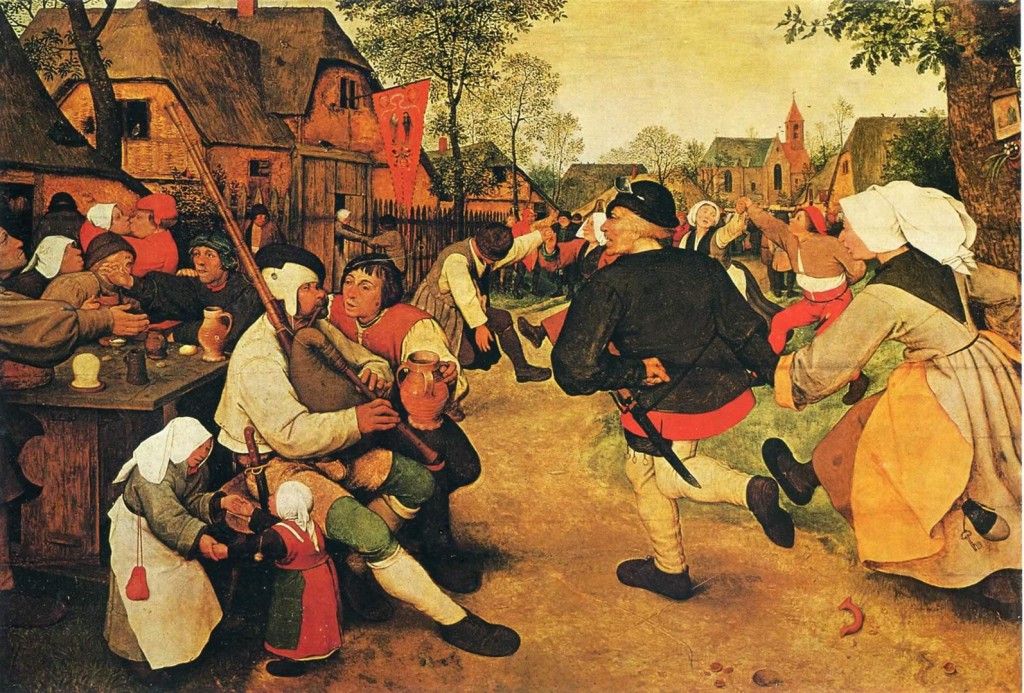In a more extreme sense than most great painters, Pieter Bruegel the Elder exists at two levels. At the popular one, his fantastic drolleries and his pictures of rollicking peasants are taken at face value and bought as popular commodity as a curious and delightful painter. At his true level, when these obvious attractions are recognized as sizzle and not steak, Bruegel is discoverable as a complex philosopher painter. He stands with the small company of the greatest artists of any time and place, and in his own century he was the only genius to appear in northern art between Durer and Rubens…

The Peasant Dance. image: WIKI
The Peasant Dance, above, is anything but a scene of pure rustic jollity. Lust, anger and gluttony mingle with joy and the excitement of a Netherlandish church fair. There is a great richness of human detail, and one sense that Bruegel is trying to zone in on the soul and its dialectic with free will with all the ensuing conflicts and contradictions that conclude with the belief that man is an enigma heroic, but faulty, redeemable and not tragic, with a particular form of bliss in identification with the cosmos.
ADDENDUM:
(see link at end)…Jacob Wisse:But while these works demonstrate the artist’s attentive eye for detail and attest to his direct observation of village settings, they are far from simple recreations of everyday life. The powerful compositions, brilliantly organized and controlled, reflect a sophisticated artistic design. Bruegel was, in fact, patronized mainly by scholars, wealthy businessmen, and connoisseurs, and was on friendly terms with some of the most prominent humanists of the Netherlands, including the cartographer Abraham Ortelius and the publisher Christoph Plantin. The ongoing debate over the interpretation of Bruegel’s “peasant” images underscores the complexity and originality of his conception. Read More:http://www.metmuseum.org/toah/hd/brue/hd_brue.htm





 COMMENTS
COMMENTS